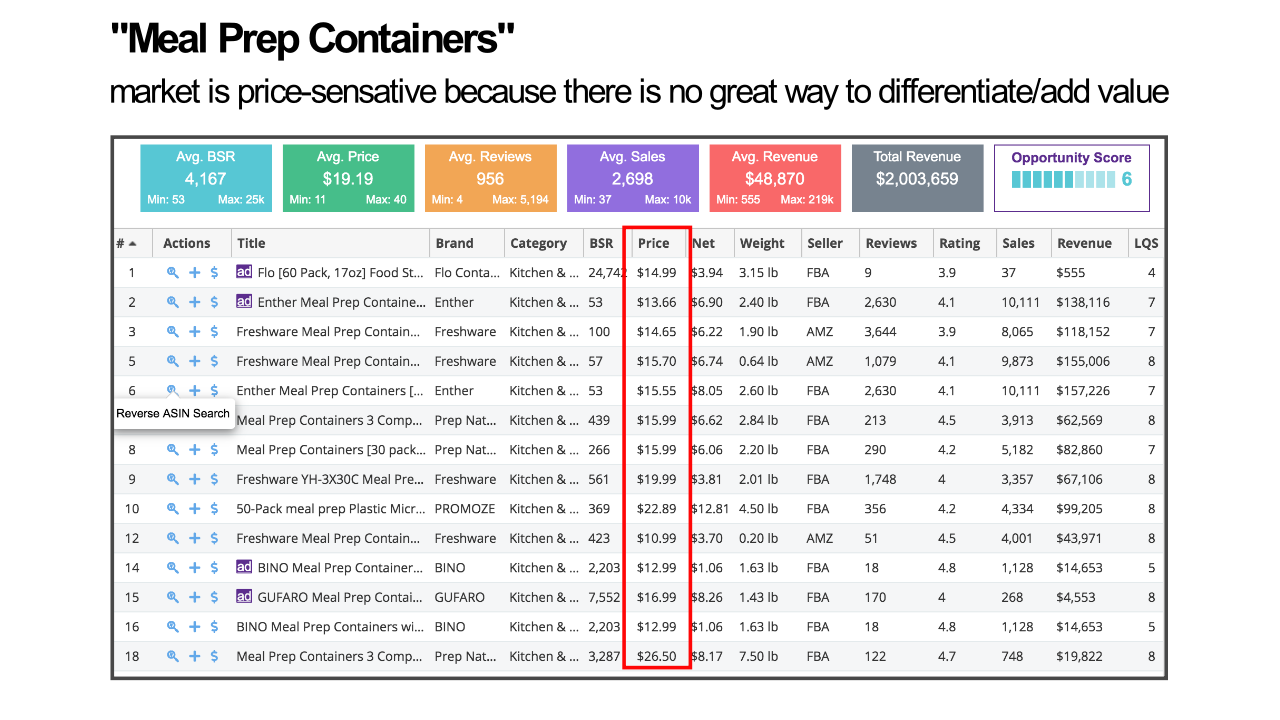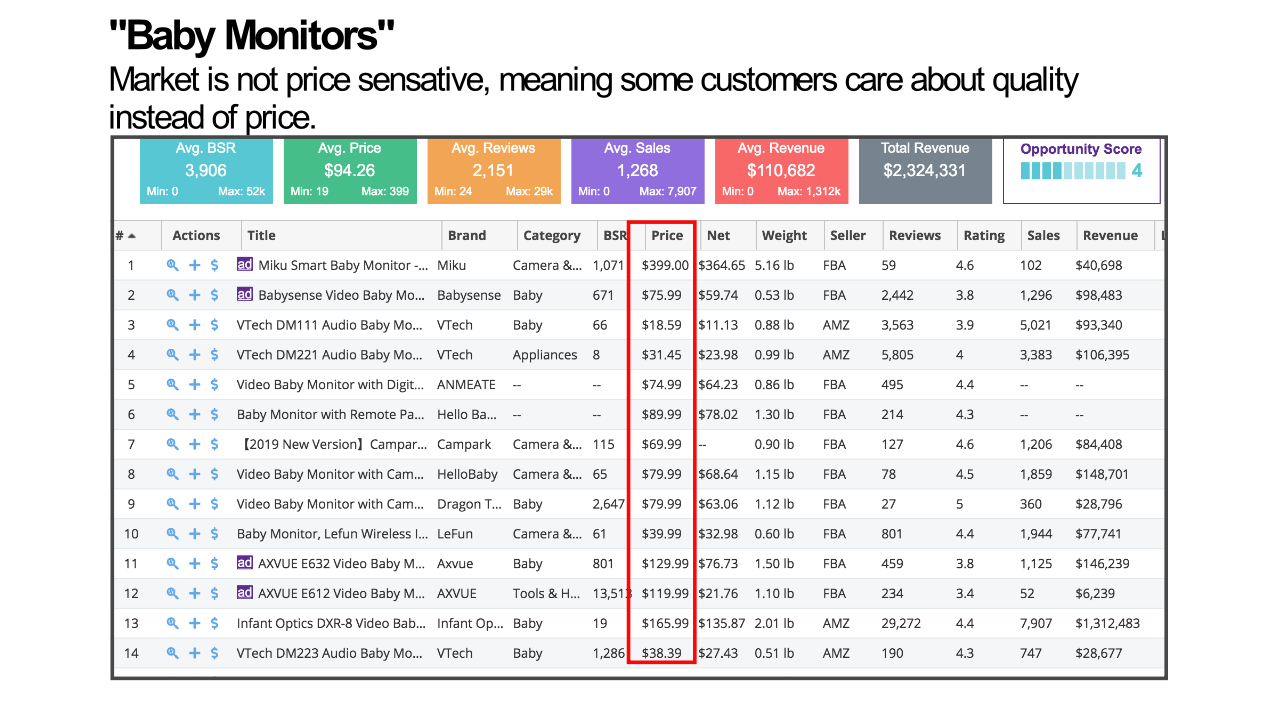How to Price your Product for Maximum Sales and Profit

Are you stuck on how you should price your product? The obvious goal of any business is to have a profitable product with lots of sales, but how do you determine the value and price of your product? Today we will look at how to price your product based off of your market, customer type, product type, and historical data to maximize your potential sales and profitability.
Know your Market
First, you need to figure out how much your customer will pay. To find that out, you need to know your demographic. Does your customer care about quality over price? Or do they place greater importance on the product being inexpensive?
Use Egrow Chrome Extension to figure out if your customer is price-sensitive or not.
Price-Sensitive Market: A price-sensitive market means the majority of customers care about finding the cheapest price or best deal. This is not ideal because it means the entire market is on a race to the bottom (bottom meaning lowest price). Price-sensitive markets usually happen when the product is very generic because the customer figures all products will be the same, why not just get the cheapest one then? This is exactly why differentiating your product is so important, your customer needs to see additional value in purchasing your product. In a price-sensitive market, you will need a price lower than your competitors or within the average price range. Below is an example of a price-sensitive market, where all prices are very similar.

Value-Adding Market: In a value-adding market, your customer will pay for a higher priced item because they believe it has superior quality, design, or appeal. If there is no real pattern of price, the customer is looking at the quality of the item or value-adding features that the product provides. Below is an example of a market that is not price-sensitive; you can see a wide range of prices.

Know your Competitors
I always recommend differentiating your product in some aspect to add perceived value to your product, but you also need to pay attention to the quality of your competitors product, packaging, images, listing, etc. Try to add value to your product/listing in some way; otherwise, if you have an average quality product, you will be in a price war with the other average competitors. Overall, I would not recommend getting into a market that the customer is price-sensitive because it will result in you compromising your profit margins to have competitive pricing.
Market History
Is this market growing or well established? If the market is growing, you will be able to charge higher because the product is new and popular. But if the market is well established, most customers can easily tell what the going rate for the product is by looking a few listings. If your product is dramatically lower or higher in an established market, it will raise questions about the quality or reliability of the product.
Price History
Check out the price history of the main competitors, if your competitors have been lowering their price the past few months, that may be a sign that the pricing is becoming more competitive and you may also have to lower your price to stay competitive in the future. If they have been raising their prices, it means the product is in high demand and you have the ability to capitalize on that demand. Below are the steps of how to check your competitor’s pricing history using Egrow’s Product Tracker:
![]()
![]()
Repeat Buys
Is this product something your customers will continuously purchase time and time again? Or is this a one-time purchase where the product will last long-term? Customers are more likely to pay more on a high-quality product they know they will not need to repurchase in the near future; while, with products that need to be repurchased more often, the customer will keep that in mind when deciding on what product to buy. You can capitalize on both high-quality one-time purchases, and repeat purchases, but you need to keep that in mind when you are pricing your product.
Psychological Pricing
Is your customer more likely to buy a product priced at $19.97 or $20 flat? How to find out? Test it! Run your product at both for the same number of days and see if there is any buying pattern that sticks out. Otherwise, you can look at the pricing strategy of your competitors to see what works best for the market, psychologically. Simply, load Egrow’s chrome extension to see if there is any distinct pricing strategy within the market.
Overall, pricing can make or break the success of your product. Some markets require a more competitive pricing strategy, while other markets are flexible with their pricing and allow you to price based on quality and branding. I hope today’s tips were able to help you determine what pricing strategy works best for your product! Make sure to research your markets pricing, and competitors historical pricing using Egrow Chrome Extension and Egrow Amazon Research Web Tool.


